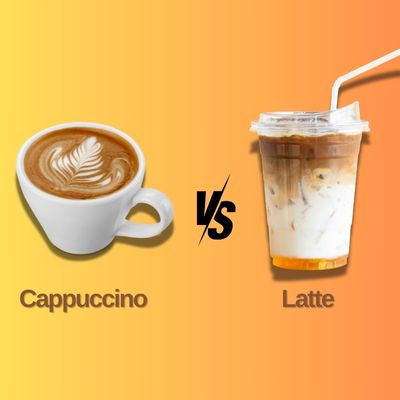In the hospitality sector, food and beverage service equipment holds the utmost importance. These essential tools ensure your food is served just right and your beverages are poured with care. Each item has an important job, from plates and glasses and more.
In this guide, we’ll go through the basic types of these tools. Whether you’re running a restaurant or just curious about how things work behind the scenes, this knowledge will come in handy.
So, let’s get started and take a closer look at the equipment that keeps the food and drinks flowing smoothly.
Importance of Food Service Equipment
Food service equipment plays a crucial role in the world of restaurant operations management. It goes beyond just pots and pans; it’s about creating an experience for the customer.
Imagine a bustling restaurant where everything runs smoothly. That’s because of the right equipment. Plates and cutlery are chosen to complement the cuisine. It’s all part of making sure the food and drinks taste great and are presented in a way that pleases the eye.
Now, let’s talk about restaurant technology. In recent years, a wide range of food and service equipment has seen remarkable transformations. Advanced ovens with precise temperature control ensure dishes are cooked to perfection.
Touchscreen registers make ordering and paying faster and more accurate. This not only makes the job easier for the restaurant staff, but it also means quicker and more efficient service for the customers.
However, we must emphasize that staying updated with these technological advancements is crucial. It keeps the business competitive and ensures that customers receive the best experience possible.
So, the right equipment is at the heart of a successful dining experience, whether it’s a traditional stove or a cutting-edge coffee machine.
List of Items of Food and Beverage Service Equipment
In this section, we’ll go over the essential aspects of food and beverage service equipment. This includes various equipment styles crucial for restaurants and eateries.
From basic items like plates and cutlery to specialized equipment such as trays, we’ll cover them all. Each piece has a specific job in making sure customers have a great dining experience.
| Ser. | Category | Types | Description |
|---|---|---|---|
| 1 | Furniture | Table | Flat surface for serving meals. |
| Chair | Seating for one person. | ||
| Sideboard | They are used for storing dishes. | ||
| 2 | Glassware | Cocktail | For mixed drinks, often with a stem. |
| Beer Mug | Sturdy glass with a handle for beer. | ||
| Champagne Flute | Tall and narrow for preserving bubbles. | ||
| Collins | Tall and narrow, used for cocktails. | ||
| Cooler | Wide-bowled glass for drinks with ice. | ||
| Highball | Taller than Old Fashioned Glass. | ||
| Margarita | Wide-rimmed glass for margaritas. | ||
| 3 | Linen | Tablecloth | Large cloth to cover dining tables. |
| Napkins | Fabric squares/rectangles for hands and mouth. | ||
| Tray Cloth | Small cloth for covering trays. | ||
| Buffet Cloth | Drapes buffet tables elegantly. | ||
| Tea Cloth | Small cloth for teapots or spills. | ||
| 4 | Tableware | Flatware | Forks, knives, and spoons for eating. |
| Silverware | Utensils made of silver materials. | ||
| Holloware | Pots, bowls, and platters for serving food. | ||
| Cutlery | Knives, forks, and spoons for cutting and eating. | ||
| 5 | Crockery | Earthenware | Pottery made from clay, often glazed. |
| Bone China | Porcelain with bone ash, known for its delicate appearance. | ||
| Porcelain | Fine, white ceramic ware known for its strength and elegance. | ||
| Stoneware | Durable, stone-like ceramics are often used for casual dining. | ||
| 6 | Disposables | Single-use items | Used for convenience and hygiene purposes. |
| 7 | Trolley | Movable platform | Used for transporting food, dishes, or drinks within a restaurant. |
| 8 | Chafing Dishes | Food warming | Specialized containers designed to keep dishes at a consistent temperature during service, commonly used in buffet-style dining setups. |
1. Furniture
Furniture in the context of food and beverage tools encompasses tables, chairs, and sideboards. It forms the essential physical infrastructure for dining setups, contributing to both functionality and aesthetics.
Types of furniture
1. Table
A flat surface supported by legs, used for serving and enjoying meals.
2. Chair
A piece of furniture designed for one person to sit on, typically having a back and four legs.
3. Sideboard
A long, low piece of furniture used for storing dishes and serving food.
2. Glassware
Glassware is crucial to the food and beverage service equipment list, providing vessels for various drinks. It serves a functional purpose and contributes to the visual appeal of a dining experience.
Types of Glassware
1. Cocktail
Specifically designed for mixed drinks, cocktail glasses often have a stemmed base, allowing the drinker to hold the glass without warming the contents.
2. Beer Mug
Known for its sturdiness, a beer mug typically has a handle, providing a comfortable grip for enjoying a cold beer.
3. Champagne Flute
This elegant glass is tall and narrow, designed to preserve the effervescence and flavors of champagne.
4. Collins
Characterized by its tall, narrow shape, the Collins glass is used for a variety of mixed drinks, particularly those with a high ratio of non-alcoholic mixer to spirit.
5. Cooler
Featuring a wide-bowled design, the cooler glass is ideal for serving mixed drinks with a generous amount of ice.
6. Highball
Taller than an Old Fashioned glass, the highball glass is suitable for highball cocktails, which are typically served with a larger proportion of non-alcoholic mixers.
7. Margarita
Recognizable by its wide-rimmed shape, the margarita glass is designed for serving margaritas and other cocktails that benefit from a salted rim.
3. Linen
Linen refers to a textile material crafted from the fibers of the flax plant. Known for its natural elegance, linen possesses exceptional absorbency, making it a preferred choice for items like tablecloths, napkins, and other fabric-based components in the service equipment industry.
Types of Linen
1. Tablecloth
A large piece of linen fabric specifically designed to cover dining tables. It serves a practical purpose in protecting the table and adds an aesthetic touch to the overall dining setup.
2. Napkins
Fabric squares or rectangles made of linen are used for the purpose of wiping hands and mouth during a meal. They contribute to the overall cleanliness and sophistication of the dining experience.
3. Tray cloth
A small linen cloth designed to cover trays, providing a neat and hygienic surface for presenting dishes or beverages.
4. Buffet cloth
Draping buffet tables with linen cloths is a hospitality industry trend that enhances the visual appeal and conveys an elegant and professional presentation of the food spread.
5. Tea cloth
A smaller linen cloth designed for teapots or spills. While its primary purpose is functional, it also adds a touch of refinement to the tea service.
4. Tableware
Tableware encompasses all the utensils, dishes, and serving pieces used for setting and dining at a table.
It includes a wide range of items like plates, bowls, cutlery, glasses, and more, all contributing to the dining experience’s functionality and aesthetics. These various styles of food service equipment are important for adding to the dining experience.
Types of Tableware
1. Flatware
Also known as silverware or cutlery, flatware consists of utensils like knives, forks, and spoons used for cutting and conveying food from plate to mouth.
2. Silverware
Often referring to items made of silver, silverware includes various types of flatware. However, it can also denote utensils made of other materials but designed to resemble silver.
3. Holloware
This category of tableware includes items like pots, bowls, and platters, which, while not flat, are crucial for serving and presenting food.
4. Cutlery
Specifically, knives, forks, and spoons fall under the category of cutlery. They are vital tools for both cutting food and facilitating easy consumption.
5. Crockery
Crockery refers to a category of dishware used for serving and consuming food. It encompasses a wide range of items, including plates, bowls, mugs, and other ceramics typically found in dining settings.
Types of Crockery
1. Earthenware
Crafted from clay and often glazed, earthenware is known for its rustic charm. While it may not be as refined as other types, it’s valued for its durability and unique, earthy aesthetic.
2. Bone China
Recognized for its delicacy and translucence, bone china is a type of porcelain composed of bone ash, giving it a distinctive appearance. It’s highly sought after for its elegant yet durable qualities.
3. Porcelain
Fine, white ceramic ware known for its strength and elegance. It’s fired at a high temperature, resulting in a non-porous, glass-like surface that’s ideal for both formal and everyday dining.
6. Stoneware
Distinguished by its durability and stone-like appearance, stoneware is fired at high temperatures, making it suitable for various culinary applications. Its natural, rustic look is favored for casual dining environments.
6. Disposables
Disposables play a pivotal role in ensuring convenience and hygiene in the list of food and beverage service equipment. These single-use items, including disposable plates, cups, and utensils, are designed to be discarded after a single use.
They streamline service operations by eliminating the need for washing and sanitizing, making them a practical choice for various catering and dining occasions.
Disposables also align with hospitality industry equipment trends towards eco-friendly options, with many now being biodegradable or compostable, reducing their environmental impact while maintaining efficiency.
7. Trolley
A trolley is a movable platform with shelves or trays designed to transport food, dishes, or beverages within a restaurant or hospitality setting.
It provides an efficient means of serving and clearing tables, allowing for smoother and more organized operations in the food and beverage service industry.
Trolleys come in various styles and sizes to suit different purposes, such as dessert trolleys, bar trolleys, and room service trolleys.
They contribute to the overall efficiency and professionalism of service, ensuring that items are delivered promptly and with minimal disruption to diners.
8. Chafing Dishes
Chafing dishes are essential food and beverage service equipment designed for keeping dishes at a consistent temperature during service.
They consist of a container, usually metal, and a heating element beneath it. Chafing dishes are commonly used in buffet-style dining setups to maintain the warmth and palatability of various dishes, enhancing the overall dining experience for guests.
Frequently Asked Questions (faqs)
What Is Food Service Equipment?
Food service equipment is the broad category of tools, machinery, and appliances used in the hospitality industry’s preparing, cooking, serving, and storing food and beverages.
What Does Service Equipment Mean?
Service equipment encompasses all the tools, machinery, and implements necessary for the effective and efficient provision of goods or services in various industries, including but not limited to the food and beverage sector.
Conclusion
In the hospitality sector, food and beverage service equipment are the unsung stars that ensure seamless operations. Each item plays a vital role, from classic crockery to specialized chafing dishes.
Staying updated with industry trends keeps establishments aligned with evolving culinary demands. This adaptability sets the stage for continued excellence in service.
Elegant porcelain and efficient trolleys are among the essential tools that contribute to a memorable dining experience. They transform a simple meal into an extraordinary event, leaving a lasting impression on guests.
Investing in top-notch service equipment is an investment in the success and reputation of any hospitality venture. In conclusion, these tools are the backbone of the industry, deserving of recognition for their pivotal role in creating exceptional dining reputes.








